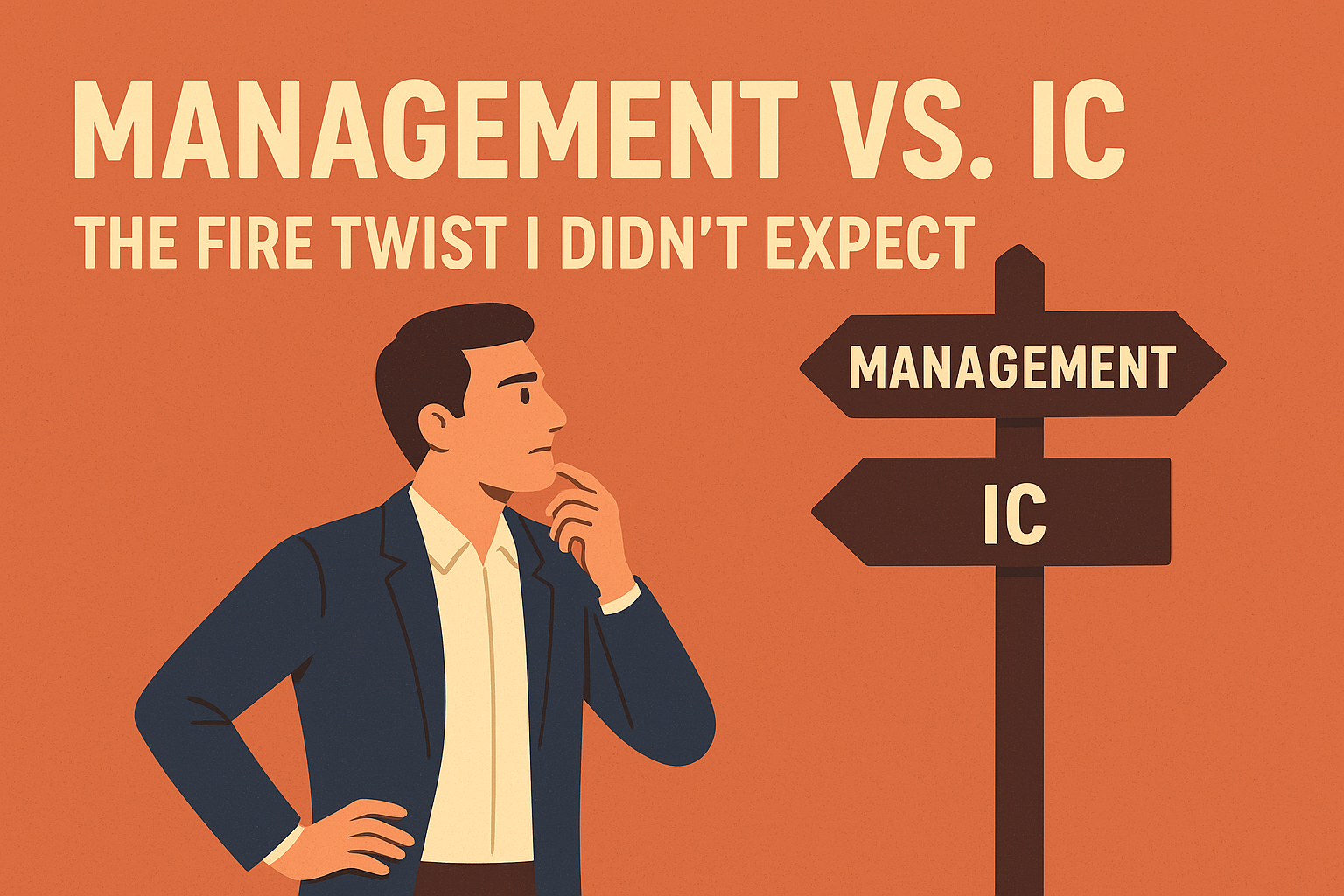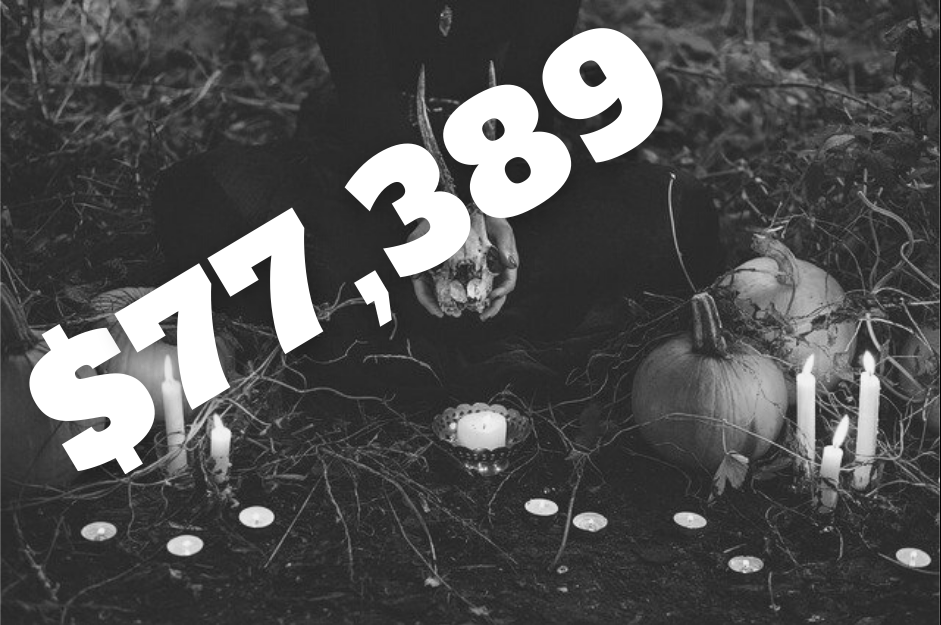10 ways to succeed as an employee (Part I of III)
Just 2 months ago I was delivering what may be my last downward feedback to the engineers on my team. At my company, we go through a lengthy process of 360 feedback and several rounds of calibrating with other managers to ensure fairness. And as I reflect back on my 6 years of being a people manager, there are qualities in employees that are more highly rewarded than others. Unfortunately, most people don't know the hierarchy of importance of those qualities. In this article, I will talk about 3 of the top 10 ways I believe will make you a successful employee at a big company, especially if you’re still young in your career. Are you ready? Standby.

1. Be reliable
The most fundamental trait of any worker is to be reliable. Are you showing up on time to your meetings? Do you communicate your updates in a timely manner? When you tell people you will be done by end of day Friday, do you deliver? Or are you letting Friday silently creep by, hoping that no one calls your name?
I’m sure we all know reliable people in our personal and professional lives. They don’t need to be working on the hardest projects or be rockstars in their roles. But they make good teammates. These are the people you enjoy being in meetings with, the people you hope to work on projects with, and even the people you want to see promoted.
2. Be nice, but direct
Being nice to others is a good thing. Nothing is worse than working with a bunch of a-holes. However, just being nice could lead to sub-optimal decision-making or even indecision. I believe the line that every effective employee needs to draw is to be firm when he/she strongly believes the current situation is trending in the wrong direction.
Don’t go along with a decision just because you’re afraid of conflict. One technique that I’ve found to be effective is to set a strong first impression with those around you that you’re not a pushover. Be direct with your communication during peacetime so that it’s easier to be even more direct during wartime. You want to be so consistent that your partners can guess what you will say before you say it.
This is probably one of the hardest things for me personally and is something I constantly battle, especially as my partners change every 3 months! Earlier in my career I wasted so much time doing work that I never believed in just because I did not want to be the cause of conflict. And the higher I progressed the more I needed to reset my threshold for being willing to engage in these conflicts.
3. Hone your individual craft
Every role has an individual skill. If you’re a software engineer you need to be excellent at writing and reading code. If you’re a teacher you need to be an excellent communicator. If you’re a cop you need to be excellent at de-escalating dangerous situations. If you’re an org leader you need to be excellent at analyzing, attracting, keeping, and motivating talent.
Especially earlier in your career, you need to build up the depth and breadth of your individual area. I see tons of motivational memes on LinkedIn talking about leadership and drive. But at the end of the day, doers got to do. There cannot be enough emphasis on being a craftsman. One of the biggest pitfalls for young professionals is that they want to immediately become Steve Jobs on day 1 of joining a company. They focus on vision before having the ability to execute. They focus on promotions before knowing how to make an impact on the business. And they focus on flash, instead of fire.
Closing thoughts
As you progress in your career, these behaviors become baseline expectations and new behaviors are needed to excel at the new level. That will be a subject that I cover in parts 2 and 3 of this series!
Featured
[

](/blog/the-post-financial-independence-life-no-one-talks-about)
Dec 13, 2025
The Post-Financial Independence Life No One Talks About
Dec 13, 2025
I used to think hitting financial independence would flip some internal switch. That I'd wake up one day and suddenly operate differently—more sophisticated, more intentional, more free. I had a clear picture in my head of what post-FIRE life would look like.
Turns out, the reality is messier than the spreadsheet ever predicted.
Dec 13, 2025
[

](/blog/im-building-a-fire-tool-and-i-need-your-input)
Oct 26, 2025
I’m Building a FIRE Tool — and I Need Your Input
Oct 26, 2025
6 years ago, when I started this blog I had a goal of retiring and spending part of my free time building tools and community for the FIRE audience. Many things have changed, goals have been met, even exceeded, but my desire to continue to give back to the FIRE community is still there. I achieved FI by earning a decent salary as a high earning 9-5 employee, being financially active, not overspending, and repeating that for 15 years. Nothing special.
Oct 26, 2025
[

](/blog/management-vs-ic-the-fire-twist-i-didnt-expect)
Sep 7, 2025
Management vs IC: The FIRE Twist I Didn’t Expect
Sep 7, 2025
I’ve been a manager for 9 years, a Director for the last 3, running ~45 people across two orgs. By all external measures, I had “made it.” Titles, scope, social recognition, the kind of comp that makes FIRE possible years ahead of schedule.
And yet, lately, I’ve been asking myself: what if I went back to being an IC?
Not because I stalled out. Not because I couldn’t “climb higher.” But because somewhere between chasing FIRE and hitting it—I rediscovered something about myself: I actually love building things.
Let’s break this down through the lenses that always mattered to me: FIRE, money, stress, fulfillment, and recognition.
Are you ready? Standby.
Sep 7, 2025
Jan 6, 2025
2024 Year in Review - Top 6 highlights
Jan 6, 2025
Happy New Year! 2024 was another fantastic year for investors. Even though I barely moved any money around, I had my 2nd highest return ever. 2024 was also a year where I felt comfortable enough to move decent chunks of money into non-traditional investments. In this post, I will review some of my year's highlights. Are you ready? Standby.
Jan 6, 2025
[

](/blog/3-things-that-make-fire-hard)
Oct 29, 2024
Oct 29, 2024
These days I hardly ever think about money. It is quite the contrast from before when I’d check in on the stock market every day, do back-of-the-napkin math on investment opportunities, and follow the Federal Reserve for macroeconomic movements like a hawk. But after some reflection, I must admit that I am a little stuck in my progression towards FIRE. In this blog post, I want to share the 3 challenges all FIRE people go through and how one of them currently has me in a pickle. Are you ready? Standby. (FIRE update at the end)
Oct 29, 2024
[

](/blog/2023-year-in-review-top-6-highlights)
Jan 1, 2024
2023 year in review - top 6 highlights
Jan 1, 2024
2023 was a fantastic year for people who held on to their stocks–up ~25% for the year. Despite interest rates, the cost of housing, and the cost of cars still being high, it was an overall good year for investors. As long as you were in crypto, bonds, or stocks it was pretty hard to have lost money. In this post, I will go over some of the highlights of my year. Are you ready? Standby.
Jan 1, 2024
[

](/blog/5-tips-on-how-to-get-promoted-in-a-big-company)
Dec 26, 2023
5 Tips on how to get promoted in a big company
Dec 26, 2023
Over the last 8 years as a manager of engineers and having been in hundreds of conversations about promotion candidates, I have learned that there is a huge disconnect between employee expectations and reality. Specifically, there is a gap in understanding of the employee’s role in the promotion process vs their manager, of the employee’s impact vs how hard they work, and of the employee’s behaviors vs how they are perceived by others. If you are frustrated about your lack of promotion or just want to learn how the sausage is made, this post is for you. Are you ready? Standby.
Dec 26, 2023
[

](/blog/is-4000000-still-a-good-fire-number)
Nov 29, 2023
Is $4,000,000 still a good FIRE number?
Nov 29, 2023
4 years ago when I started MyRoadToFire I got a good amount of readers because the FIRE community was defining fatFIRE as having a net worth of $2,500,000 but I, and many of you, believed that to be too low. In 2019, I strongly believed that having $4 million would comfortably allow a family to FIRE. Fast forward to the end of 2023, I strongly believe that having only $4 million would be extremely risky for that same family to FIRE. So was I wrong? As one of my most annoying managers used to say “yes and no.”
Nov 29, 2023
[

](/blog/stock-market-is-back-to-near-all-time-highs)
Jul 28, 2023
Stock market is back to near all-time highs
Jul 28, 2023
It’s been 6 months since my last post and a lot of positive things have happened at the macro level. Inflation went from 6.0% in Feb 2023 to 3% in June 2023. The S&P 500 index rose 14%, FB up 121%, TSLA up 60%, MSFT up 39%, AAPL up 37%, GOOG up 36%, and AMZN up 31%. These are all significant gains and it makes me wonder if I should continue my long breaks in blogging to keep this streak going.
But I cannot not blog about my personal update tonight because I’ve reached another personal milestone. Are you ready? Standby.
Jul 28, 2023
[

](/blog/3-ways-i-might-make-money-in-2023)
Feb 4, 2023
3 Ways I Might make money in 2023
Feb 4, 2023
For many, 2022 was a disaster year. Especially for me. I was set back by $1.84 million–yikes! Many people believe we still haven’t hit bottom yet and even fewer people believe that we will recover to 2021 levels in 2023. My prediction is that SP 500 will continue to hover around 3800-4200, mortgage rates will continue to hover around 6%, residential real estate prices will drop, but tech stocks will boom. Based on those predictions there are 3 areas I want to put my money to earn a positive return in 2023. Are you ready? Standby.
Feb 4, 2023
[

](/blog/time-to-retire-winter-of-2022)
Dec 26, 2022
Time to Retire? – Winter of 2022
Dec 26, 2022
8 years ago when I put pen to paper, I had marked the Winter of 2022 as my target date to retire. Like most multi-year estimations, I was wrong. 8 years ago I did not have a wife. I did not have 3 kids. I did not own a house. And I understood very little about personal finance. In this post, I will talk about how far off I think my estimation was and the lessons that I’ve learned as a result. Are you ready? Standby.
Dec 26, 2022
[

](/blog/the-american-dream-episode-1)
Sep 25, 2022
The American Dream - Episode #1
Sep 25, 2022
I started this blog almost 3 years ago with the goal of sharing my personal finance story with the world. I took the dive not knowing if people will care, or worse, feel resentment towards my success. But through this blog, I’ve reunited with some old friends and I’ve been introduced to new ones. We all share the same optimism around our own personal financial success. Additionally, I’ve had the pleasure to sit down with some people to listen to their stories and understand how they have achieved the American Dream. It’s very humbling to learn about their unique challenges and how they’ve overcome them. These are the exact stories that are missing from today’s mainstream media but are silently happening every day.
Sep 25, 2022
[

](/blog/sept-2022-fire-update-we-moved-to-texas)
Sep 22, 2022
Sept 2022 FIRE Update: We moved to Texas!
Sep 22, 2022
Today is my last day of paternity leave. I can’t believe it’s only been 4.5 months–surprisingly it feels much longer. In the last 4 months, we invited the 5th member into our house, moved our family down to Texas, went to urgent care multiple times, changed sleep configurations 10+ times, and saw my net worth increase by at least half a million only to see it dissipate in the last week. In this post, I will talk about my FIRE update, my experience moving to Texas, and share a little bit about the cost of living in North Dallas. Are you ready? Standby.
Sep 22, 2022
[

](/blog/10-ways-to-succeed-as-an-employee-part-iii-of-iii)
Aug 22, 2022
10 ways to succeed as an employee (Part III of III)
Aug 22, 2022
Several months ago I was delivering what may be my last downward feedback to the engineers on my team. At my company, we go through a lengthy process of 360 feedback and several rounds of calibrating with other managers to ensure fairness. And as I reflect back on my 6 years of being a people manager, there are qualities of employees that are more highly rewarded than others. Unfortunately, the hierarchy of importance of those qualities aren’t known to most people. In this article, I will talk about 4 of the top 10 ways I believe will make you a successful employee at a big company, especially if you’re still young in your career. Are you ready? Standby.
In case you missed it, you can find the other 6 ways in Part I and Part II.
Aug 22, 2022
[

](/blog/10-ways-to-succeed-as-an-employee-part-ii-of-iii)
May 16, 2022
10 ways to succeed as an employee (Part II of III)
May 16, 2022
Just 2 months ago I was delivering what may be my last downward feedback to the engineers on my team. At my company, we go through a lengthy process of 360 feedback and several rounds of calibrating with other managers to ensure fairness. And as I reflect back on my 6 years of being a people manager, there are qualities of employees that are more highly rewarded than others. In this 3-part blog series, I will break down the behaviors that are needed at different stages of your career in a big company. This is part II of a III part series. In Part II, I will cover 3 more behaviors and skills needed to excel after showing some success at your job. You can find Part I here. Are you ready? Standby.
May 16, 2022
[

](/blog/10-ways-to-succeed-as-an-employee-part-i-of-iii)
May 14, 2022
10 ways to succeed as an employee (Part I of III)
May 14, 2022
Just 2 months ago I was delivering what may be my last downward feedback to the engineers on my team. At my company, we go through a lengthy process of 360 feedback and several rounds of calibrating with other managers to ensure fairness. And as I reflect back on my 6 years of being a people manager, there are qualities of employees that are more highly rewarded than others. Unfortunately, the hierarchy of importance of those qualities aren’t known to most people. In this article, I will talk about 3 of the top 10 ways I believe will make you a successful employee at a big company, especially if you’re still young in your career. Are you ready? Standby.
May 14, 2022
[

](/blog/quick-2022-life-update)
May 14, 2022
May 14, 2022
It’s been a while since I last posted and a lot has happened since. On the macro level, the stock market almost went into a bear market (defined as -20%) since the start of the year, Russia-Ukraine war started, home mortgage rates went from 3% to 5%, and baby formula cannot be found in some cities. On a personal level, my family finally caught COVID, my new home construction has been delayed by 4 months, I went through a re-org at work, I sold a ton of stock, I lost over $1,000,000 in portfolio value, I paid my $85K tax bill (not a typo), and I am now a father of 3 boys. In this blog, I’ll expand on my $1,000,000 loss, why I’m not concerned for myself, why I’m concerned for the bottom 90%, and what my plan is for the next 12 months.
May 14, 2022
[

](/blog/5-reasons-why-its-hard-to-retire-early-after-reaching-financial-independence)
Jan 21, 2022
5 reasons why it’s hard to retire early after reaching Financial Independence
Jan 21, 2022
I thought that when I hit my $4,000,000 FI number, I would immediately hand in my resignation letter and pack my bags the next day. After all, I’ll be financially independent. I’ll have enough f-you money to do whatever I want. Why would I care what my employer has to say? Well, I reached my FIRE number in the middle of 2021 and I’m still working 9 months later. Over the last year, as I quickly approached my FIRE number I learned a great deal on what it takes to retire early. I’ve been overly focused on achieving FI and it came so fast, that I was left ill-prepared to RE. In this post, I’ll outline 5 of the difficulties that I’m currently going through and why I haven’t been able to throw in that resignation letter…yet. Are you ready? Standby.
Jan 21, 2022
[

](/blog/free-financial-coaching)
Oct 24, 2021
FREE Financial Coaching from Road to FIRE
Oct 24, 2021
Do you and your spouse make more than $150K a year? If so, I am offering free financial coaching to you! I know that personal finance is hard but there’s no reason why you need to do it alone. Your traditional Financial Advisors will not know how aggressive you need to be in order to achieve FIRE or have the proper experience to coach you through difficult financial decisions while still prioritizing FIRE.
Oct 24, 2021
[

](/blog/momma-i-did-it)
Aug 26, 2021
Aug 26, 2021
8 years ago when I officially started my road to FIRE, I didn’t know what to expect. I can’t say that I truly believed it was achievable before 50 years old. And by “it” I mean amassing $5 million in net worth. If memory serves me, the original plan was $5 million by 45 years old. I remember telling my mom about this ridiculous plan to retire early. She didn’t give me much of a reaction. Kind of like when you told your parents you were going to the NBA in middle school or that you were going to be the President of the United States. It’s how parents react when they don’t want to bust their kid’s unrealistic dreams.
Aug 26, 2021
[

](/blog/5-things-you-should-practice-to-become-a-multi-millionaire)
Aug 24, 2021
5 things you should practice to become a multi-millionaire
Aug 24, 2021
Have you ever wondered what it takes to become a self-made multi-millionaire? Or does it feel too distant that it’s just a dream? Is the American Dream dead for millennials and Gen Zers? Unquestionably, the world is rapidly changing, and our generation is left to navigate it with very little guidance. The jobs that our parents’ generations did to become rich most likely won’t make our generation rich. With that said, I strongly believe that the American Dream is still alive and that the recipe for success is a set of behaviors, not a set of instructions. My family came to America in the late 1980s as refugees, and in one generation have been able to go from the bottom 5% to the top 1%. In this article, I will distill it down to the 5 behaviors, with examples, that I believe is the foundation for financial and career success.
Aug 24, 2021
[

](/blog/road-to-1000000-portfolio-series-part-1)
Apr 2, 2021
Road to $1,000,000 portfolio (series) - Part 1
Apr 2, 2021
In this series, which I’ll call “Road to $1,000,000”, I will be constructing a portfolio that is more aggressive but still mainly grounded in dividend aristocrats. At the beginning of last year, I set out to run a $77,000 experiment where I only invested in dividend aristocrat stocks. After some consideration, I will be reusing that same account in order to build up a $1,000,000 portfolio alongside the rest of you! To help me get there quicker, I have also decided to double my weekly contributions from $1,000 to $2,000. The rest of this post will be focusing on what is in my new portfolio, how long I think it’ll take until this portfolio grows to be $1,000,000, and some exciting news on where I’m at on my road to FIRE. I promise there is no April Fools joke in here. Are you ready? Standby.
Apr 2, 2021
[

](/blog/7-best-money-decisions)
Apr 1, 2021
Apr 1, 2021
On my road to FIRE, I’ve had to make a handful of big decisions that have had a material impact on my net worth. As I reflect, there are a set of decisions that were pure luck and others that were calculated. Regardless of intentional or not, they have significantly contributed or enabled my net worth to be where it is today. As I list out the big money decisions, I’ll try my best to be specific about the numbers. Are you ready? Standby.
Apr 1, 2021
[

](/blog/how-much-did-i-spend-in-2020)
Jan 22, 2021
How much did I spend in 2020???
Jan 22, 2021
It’s that time of the year! I’m in the middle of writing annual performance reviews for my day job. And like all of the other managers, I needed a break from politicking. So I decided to spend a couple of hours reviewing my 2020 spending! Since I had a ton of fun doing it last year I thought I’d do it again. What a year! Standby.
Jan 22, 2021
[

](/blog/my-77000-experiment-portfolio-year-end-2020-update)
Jan 4, 2021
My $77,000 experiment portfolio -- year end 2020 update
Jan 4, 2021
Happy new year! A year ago, I started a new M1Finance portfolio where I picked several dividend stocks to invest in. The goal was to achieve similar returns to the SP 500 index but beat it in terms of dividends. As of the writing of this article, I’ve contributed $77,000 of my own money into this portfolio ($25,000 initially and $1k contribution per week). In this article, I’ll share the end-of-the-year results, how I’m doing against the market and my thoughts on the dividend aristocrat experiment. Finally, I will be sharing an update on what I plan to do during 2021--stay tuned!
Jan 4, 2021
[

](/blog/3000000-in-mistakes-my-7-biggest-money-regrets)
Dec 3, 2020
$3,000,000 in mistakes -- my 7 biggest money regrets
Dec 3, 2020
I have spent a decent amount of time reflecting on my biggest money mistakes. 13 years ago I started on a journey to build wealth. I can’t say that I always did the right things. In fact, I made a lot of mistakes. And now looking back, those mistakes have amounted to $3+ million dollars in either lost opportunity or lost money. In this article, I’ll be talking about specific mistakes and try my best to quantify how much money was lost.
Dec 3, 2020
[

](/blog/my-77000-experiment-portfolio-nov-2020-update)
Nov 25, 2020
My $77,000 experiment portfolio -- Nov 2020 update
Nov 25, 2020
At the beginning of 2020, I started a new M1Finance portfolio where I picked several dividend stocks to invest in. The goal is to achieve similar returns to the SP 500 index but beat it in terms of dividends. As of the writing of this article, I’ve contributed $73,000 of my own money into this portfolio. By the end of this year, I will have contributed $77,000 ($25,000 initially and $1k contribution per week). In this article, I’ll share my M1Finance portfolio, how I’m doing against the market, my thoughts on the current stock market, and how I am doing against my FIRE schedule.
Nov 25, 2020
[

](/blog/road-to-10-million-retire-by-35-and-become-a-deca-millionaire-by-50)
Nov 16, 2020
Road to $10 million - Retire by 35 and become a deca-millionaire by 50
Nov 16, 2020
For those who have been following my story, you know that I plan to retire at 35 years old with a $4 million net worth. It has been over a year since I’ve started blogging and as I approach my FIRE number, I think I owe it to you guys on “what’s next.” Recently, someone asked if I planned to keep an aggressive, mostly-stocks portfolio or if I was going to rotate into bonds or an all-weather portfolio during retirement. The short answer is no. The nuanced answer is, maybe some real estate. In this post, I will talk about how my setup will allow me to retire comfortably, while still growing my net worth to $10 million by the time I’m 50 years old.
I will break down my Road to $10 million into 4 major components, explain how each one of them will play out over the next 15 years, and then bring it all together at the end.
Nov 16, 2020
[

](/blog/my-77000-experiment-portfolio-oct-2020-update)
Oct 26, 2020
My $77,000 experiment portfolio -- Oct 2020 update
Oct 26, 2020
At the beginning of 2020, I started a new M1Finance portfolio where I picked several dividend stocks to invest in. The goal is to achieve similar returns to the SP 500 index but beat it in terms of dividends. As of the writing of this article, I’ve contributed $66,000 of my own money into this portfolio. By the end of this year, I will have contributed $77,000 ($25,000 initially and $1k contribution per week). In this article, I’ll share my M1Finance portfolio, how I’m doing against the market, my thoughts on the current stock market, and how I am doing against my FIRE schedule.
Oct 26, 2020
More Posts

Navigating Your Career in the Age of AI

The Post-Financial Independence Life No One Talks About

Comments